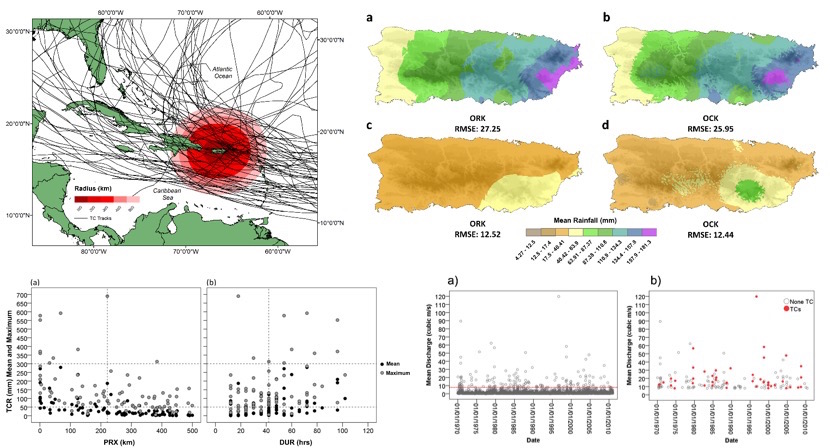Friday September 9 CSL Meeting
Sep 6, 2016 - CSL

Dr. José J. Hernández Ayala
We are very pleased to welcome our newest faculty member to the Climate Science Lab: Dr. José J. Hernández Ayala joins us from the University of Florida as a visiting assistant professor in the Department of Geography. At the first CSL meeting of the fall 2016 semester, Dr. Hernández will be sharing with us some of his research expertise in the hydroclimatology of tropical cyclone rainfall. Please join us both in welcoming Javier, and for his presentation tomorrow:
Climatology of Tropical Cyclone Rainfall over Puerto Rico: Processes Patterns and Impacts
Presenter: Dr. José J. Hernández Ayala
Time: Friday 9 September, 2:00-3:00 p.m.
Location: 805 O&M
Abstract: Although tropical cyclone rainfall (TCR) is common over Puerto Rico, the factors that cause this rain to vary from one storm to another, its spatiotemporal distribution and relationship with extreme flood events have not been studied thoroughly. This dissertation focuses on the climatology of tropical cyclone rainfall over the island of Puerto Rico. Several aspects of the rainfall associated with the passage of tropical cyclones are explored. The first problem focuses on understanding the environmental and storm specific factors that control tropical cyclone rainfall variability over the island. The second research question examines the spatial distribution of precipitation associated with tropical cyclones and the storms contribution to the rainfall climatology of Puerto Rico. The third and final problem deals with understanding the relationship between extreme floods and tropical cyclones that impacted Puerto Rico. Results from correlation analyses of the individual predictors, principal component regression (PCR) procedures and Mann-Whitney U tests identified precipitable water, storm center proximity to land, mid-level relative humidity, duration, horizontal translation speed and longitude as the predictors with the strongest influence on tropical cyclone rainfall. Results from ordinary kriging and cokriging techniques show that tropical cyclone rainfall tends to be cluster in the eastern, southeastern and central regions of the island with a decrease in values as we move west and northwest. The month with the largest contributions (>20%) for most of the stations was August followed by September and October while the months with the lowest contributions were June and July. Results from an extreme value analysis (EVA) point process approach suggest that TCs play a major role in the flood peak distribution of Puerto Rico, especially in stations in the eastern interior and the central region which exhibited a strong relationship with tropical cyclones.
 Several questions related to the rainfall associated with the passage of tropical cyclones in Puerto Rico will be discussed in this presentation. The focus will be on discussing the factors that make certain tropical cyclones produced more rain than others over the island, also highlighting the spatial distribution of this precipitation and its relationship with flood events. These are some of the questions to be discussed: Why do some TCs produced more rainfall? Where is this rainfall concentrated and how important is it to the overall climatology of the island? How are extreme flood events related to TCs in PR?
Several questions related to the rainfall associated with the passage of tropical cyclones in Puerto Rico will be discussed in this presentation. The focus will be on discussing the factors that make certain tropical cyclones produced more rain than others over the island, also highlighting the spatial distribution of this precipitation and its relationship with flood events. These are some of the questions to be discussed: Why do some TCs produced more rainfall? Where is this rainfall concentrated and how important is it to the overall climatology of the island? How are extreme flood events related to TCs in PR?
Reference:
Hernández Ayala, J. J. and Matyas, C. J., 2016: Tropical cyclone rainfall over Puerto Rico and its relations to environmental and storm-specific factors. Int. J. Climatol., 36(5), 2223–2237, doi:10.1002/joc.4490.
